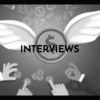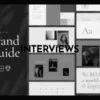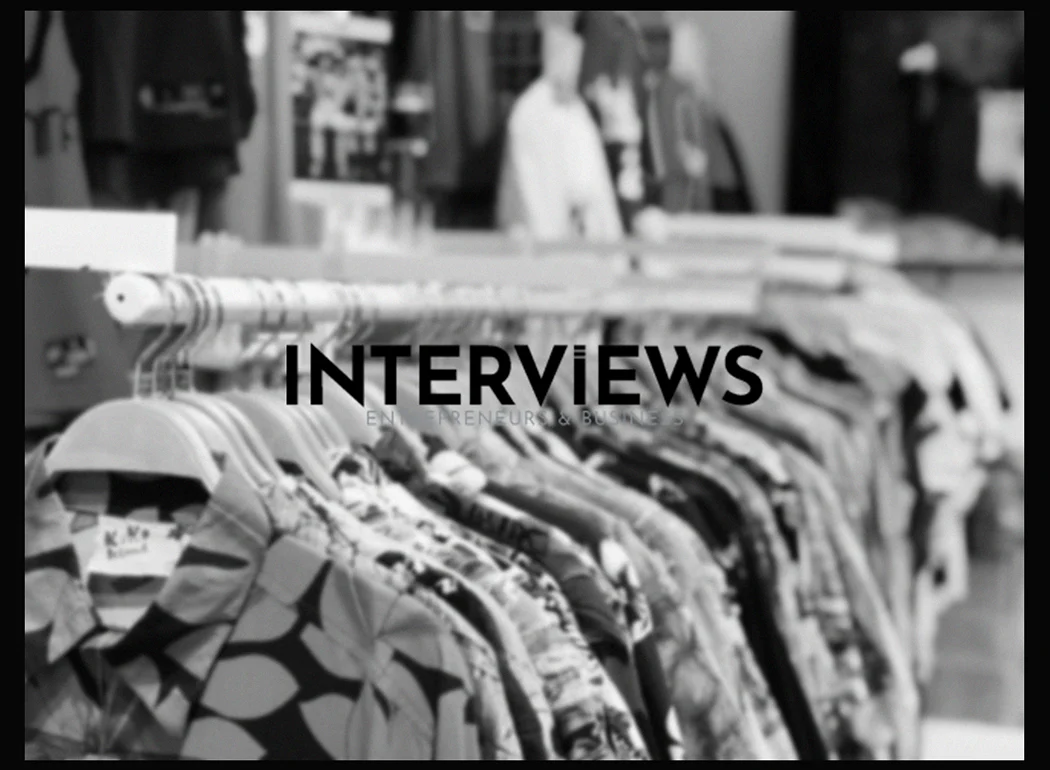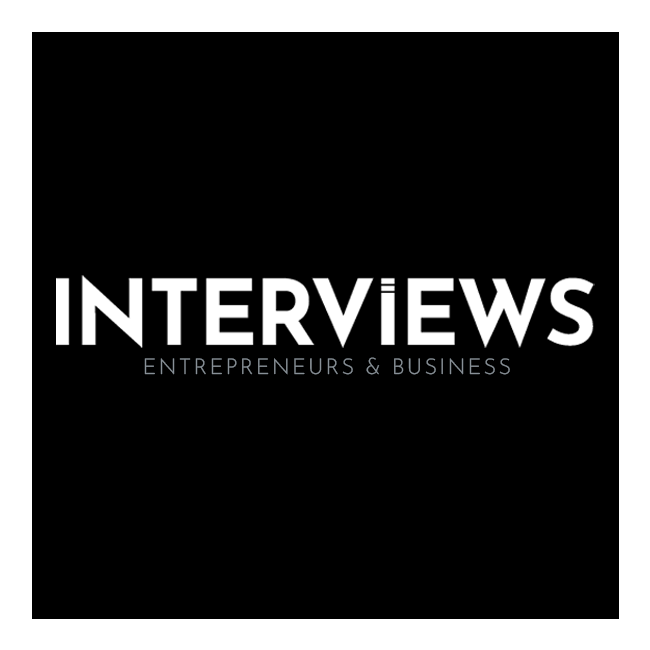Do you want to be the next Coco Chanel or Virgil Abloh? Be careful, fashionista. Launching a clothing brand is about more than pretty sketches. It’s a journey filled with costs and decisions. There’s a lot of legal talk here. Let’s explore what you are getting into.
I. The Cold, Hard Cash: Cost of Launching Your Clothing Empire
Money matters. It drives the fashion industry. Before designing your logo, let’s discuss how much you’ll need.
A. Initial Costs: Prepare to Open Your Wallet
- Business Plan: This roadmap outlines your brand’s goals. You wouldn’t travel cross-country without a GPS, would you? A strong plan details targets and financial forecasts for clarity.
- Branding (Logo, Brand Identity, Style, Message): This is where magic starts. A logo needs more than just a nice font. Consider your brand’s personality. What story are you telling? If you miss the mark, you’ll be unheard.
- Design and Development (Software, Materials, Designer Hiring): Unleash your designer! Be aware that software costs money, and materials aren’t free. Hiring talent? Prepare to spend on skilled workers.
- Fabric and Textile Sourcing: Quality fabrics are essential for your brand’s reputation. Cheap materials suggest poor quality. Research and secure reliable suppliers.
- Manufacturing: Planning to sew every piece yourself? Not likely. A reliable manufacturer saves time. Finding the right one often feels like dating—lots of tries before success.
- Marketing and Sales (Website, Social Media, Advertising): A launch without visibility is pointless. Your website is a storefront. Social media amplifies your reach. Allocate money wisely to make noise.
- Legal and Administrative Costs (Registration, Permits, Paperwork): Yes, this dull side exists. Don’t skip registrations and permits. Ignoring them leads to fines and other legal problems.
B. Ongoing Costs: The Monthly Grind
Think expenses cease after launch? Not true. Here’s what continues costing you.
- Inventory: Clothes for selling? You need to buy them before selling. Take care; inventory can become a financial burden.
- Production Costs (Labor, Materials, Overhead): Manufacturing costs add up. Even materials are costly, along with overhead expenses like rent and utilities.
- Shipping and Logistics: Transporting items from storage to customers involves shipping fees. Meeting customer expectations can be expensive.
- Marketing and Advertising: Constant marketing is crucial. Ongoing ad campaigns and social media promotions require funds to maintain visibility.
- Website Maintenance and Hosting: The website needs upkeep. Managing hosting fees and security features is critical for long-term success.
- Staff Salaries: Growth often necessitates hiring employees. Salaries are an investment that pays off if managed well.
- Rent and Utilities: If you have a physical store, rent comes into play. Online-only brands avoid some of these costs temporarily.
II. Pro-Tips: Wisdom Nuggets for Aspiring Fashion Moguls
Ready to jump in? Here’s sage advice to sidestep common mistakes.
- Start Small: No empire rises overnight. Begin with a small collection to gauge interest before expanding.
- Focus on Quality: In a world of throwaway fashion, quality makes you stand out. Happy customers return.
- Build a Strong Brand Identity: Define what makes you unique. This identity attracts your target market.
- Leverage Social Media: Use these free tools for marketing. Engage with audiences to grow your community.
- Seek Help and Advice: Don’t hesitate to ask for assistance. Connect with mentors and industry professionals for guidance.
III. LLC: Your Business Superhero Cape?
What is LLC? It stands for Limited Liability Company. Is it crucial for your clothing brand?
A. LLC – The Perks: Why Bother?
- Liability Protection: If challenges arise like debt or lawsuits, an LLC protects your personal assets. Business obligations remain separate.
- Professionalism and Credibility: An LLC looks more legitimate than “Joe’s Tees.” This impression helps with customers and suppliers.
- Separation of Finances: Keeping business money separate from personal funds helps streamline accounting and taxes.
- Tax Advantages: An LLC structure may offer tax benefits based on your specific operations. Discuss this with a tax advisor.
- Ease of Operations: An LLC simplifies processes like opening bank accounts or securing loans for your business.
B. Hold Up, Maybe No LLC? When to Pump the Brakes
- Small, Low-Risk Businesses: If you’re just selling a few items online as a hobby, an LLC could be excessive for now.
- Initial Stages: While testing ideas, an LLC can wait. Validate concepts first before fully committing.
C. LLC – How-To: Adulting 101
If you decide on an LLC, here is a checklist:
- Choose a Business Name: Pick something catchy! Ensure it’s unique and verify state availability through quick online searches.
- Register Your Business: Complete the necessary state paperwork at the Secretary of State’s office.
- Obtain an EIN (Employer Identification Number): Apply for your EIN through the IRS. This number is essential for taxes and banking.
- Create an Operating Agreement: This agreement is your business rulebook. Specify operations, ownership details, and decision-making processes.
- Open a Business Bank Account: Keep finances separate! A dedicated business account is essential for smooth operation.
IV. The Grand Plan: Steps to Launch Your Clothing Line
Your strategy matters now! Let’s detail the steps from idea to clothing line launch.
A. Blueprint Time: Develop a Business Plan
- Define Your Brand (Vision, Mission, Target Audience): Vision outlines your future. Mission describes your journey. Know your audience clearly—who will wear your designs?
- Research the Market (Trends, Competitors, Customer Needs): Understand your industry landscape through market research about trends and competitors so you can adjust to customer desires.
- Determine Your Business Structure (Sole Proprietorship, LLC, etc.): Choose the legal framework fitting your goals—LLC, sole proprietorship, or others (see Section III for more insights).
- Outline Your Financial Projections: Assess start-up costs, production expenses, and revenue expectations via detailed forecasts in spreadsheet form.
- Develop a Marketing Strategy: Consider how you’ll communicate your launch campaign effectively through social media and other outlets.
B. Design Magic: Create Your Clothing Line
- Create Your Designs: Time to unleash creativity! Sketch ideas that resonate with your target audience while reflecting your brand image.
- Source Fabrics and Materials: Look for quality materials while balancing costs and ethical sourcing practices—samples can help decide which options work best.
- Find a Manufacturer or Production Partner:Create a production plan: DIY or partner up? Choose between local or overseas manufacturers based on needs and values.
C. Digital Stage: Build Your Brand and Online Presence
- Create a Website: Design a professional site that shoppers can easily navigate to view products—make the user experience enjoyable!
- Develop a Strong Brand Identity:Create an engaging name and logo; ensure visual elements create lasting recognition.
- Build a Social Media Presence:Your social media allows you to connect directly with potential customers—engage them creatively!
- and community hub. Engage, share pretty images, be social.
D. Showtime: Market and Sell Your Clothing
- Develop a Marketing Plan: Use social media, email, ads, PR. How will you reach your audience? Your marketing plan fuels sales.
- Consider Online Sales: E-commerce dominates. Use Shopify, Etsy, or build your site to start selling.
- Explore Retail Partnerships: Boutiques and concept stores possess allure. Collaborate to widen your audience.
- Focus on Customer Service: Satisfied customers = repeat sales and free marketing. Treat them like treasures.
E. Legalese and Business Chores: Legal and Business Considerations
- Register Your Business: Legitimacy matters. Obtain licenses and permits. Skip this and risk trouble.
- Protect Your Intellectual Property (Trademarks, Copyrights): Safeguard your brand name and logo. Trademarks and copyrights provide legal protection.
- Understand Tax Obligations: Taxes are unavoidable. Learn your tax responsibilities. Hiring an accountant may be wise.
F. Success Hacks: Tips for Triumph
- Stay True to Your Brand: Consistency is vital. Don’t chase trends blindly. Stay authentic.
- Be Adaptable: Fashion is unpredictable. Trends shift constantly. Stay flexible for survival.
- Network and Build Relationships: Connections can be valuable. Collaborate with others in the industry. Fashion relies on community.
- Focus on Quality: Repeat after me: quality matters. It pays off over time.
- Experiment: Don’t be afraid to experiment: Innovation thrives in fashion. Embrace new ideas and take measured risks.
V. Money Matters: Financial Deep Dive
Let’s discuss numbers. Starting costs, potential earnings, and trademark expenses await.
A. Minimum Budget: How Deep Are Your Pockets?
- ₹5 lakh to ₹10 lakh (India): In India? Reasonably ₹5 to ₹10 lakh can kickstart your venture.
- Varies Significantly: Globally, costs fluctuate greatly. Online brands may need $5,800-$17,000 upfront. Dreaming of retail? Expect $64,500-$131,300 or more. Scale influences costs.
B. Profitability: Will You Actually Make Money?
- Depends on Management and Market Needs: Yes, *if* smart strategy meets demand. Fashion is a business, not charity.
- Product Pricing, Marketing, and Operations Efficiency: Master pricing, marketing, and efficiency for profitability. Nail these factors to break even eventually.
C. Trademarking: Brand Protection Costs
- $350 per class of goods or services (Electronic Filing): Trademarking isn’t free. Pay $350 per class electronically. Protecting your brand is an investment.
- $850 (Paper Applications): Using paper? It’s pricier; $850 for paper applications. Go online to save money.
VI. Legal Landmines: Navigating the Legal Jungle
Legal issues can bore you, yet they are necessary. Copyrights, LLCs, tax deductions aim to clarify.
A. Copyright: Brand Name Protection
- Registering Your Brand Name: Yes, register it! Trademark it as discussed. Copyrights cover creative works; trademarks cover brand names.
B. LLC Requirement: Must-Have or Nice-to-Have?
- Not Always Required, but Offers Benefits: An LLC isn’t necessary for launches but protects liability and finances. Long-term? An LLC is wise.
C. Tax Write-offs: Fashion Freebies?
- Clothes Used Exclusively for Business: Can you deduct work clothes? Perhaps, only if reserved strictly for business use. Think uniforms rather than a stylish blazer.
VII. Making It Real: Manufacturing Matters
The manufacturing process bridges design and reality. Costs, models, and case studies follow.
A. Manufacturing Costs: What Drives Up the Price?
- Factors Influencing Costs
- Materials: Fabrics, zippers, buttons are significant cost components.
- Labor: Labor varies based on location: sewing and cutting garments for construction.
- Equipment and Machines: Sewing machines, cutting tools, and printing gear raise costs.
- Quality Control: Monitoring quality incurs expenses but maintains your reputation.
- Packaging: Attractive packaging ups costs. Basic options are cheaper alternatives.
- Shipping and Fulfillment: Transporting goods incurs costs reliant on volume and distance.
- Production Model (Print-on-Demand, Small Batch, Large Scale): Print-on-demand avoids inventory and incurs per-item costs. Small batch means moderate costs while large scale often lowers per-unit prices but demands higher investments upfront.
- Garment Complexity: A simple tee is cheaper to produce than an ornate gown, costing more due to design intricacy.
- Quantity Ordered: Bulk orders typically reduce per-item expenses through discounts.
- Location: Manufacturing in Bangladesh vs. Italy means vastly different labor costs. Location impacts production costs.
- Type of Clothing: A t-shirt’s simpler than a jacket regarding details and pricing.
- Customization: Custom touches like embroidery raise costs significantly.
- Emerging vs. Established Designer: New designers may incur higher initial costs compared to established brands due to experience disparities.
B. Real-World Examples: Cost Snapshot
- Small Clothing Business ($500): Surprisingly possible! Start with about $500 and focus on DIY and online sales only.
- Medium-Sized Line ($1500–5000): More serious? Expect $1,500-$5,000 for a medium-scale line featuring more designs and quality materials.
- Large-Scale Fashion Business (Tens of Thousands): Planning to scale? Expect significant investments in the tens of thousands for added complexity and team requirements.
- Sample Production ($50 to $300 per Piece): Samples carry costs too: $50-$300 each depending on size and materials. Include sampling in your budget.
VIII. Show Me the Money: Revenue and Design Insights
Earnings, design volume, and profit margins hold interest here.
A. Average Income of Clothing Brand Owner: The Paycheck Reality
- $30,000 to $120,000 Annually: An average clothing brand owner earns $30,000-$120,000 yearly. This varies widely based on business size, efficiency, market success, and luck factors.
B. Number of Designs to Start: Capsule Collection Size
- 3-8 Styles for Initial Collection: Start small with 3-8 designs in your initial collection—especially for womenswear. Value quality over sheer quantity.
C. Profit Margin: The Magic Number
- Baseline Profit Margin: Maintain a minimum 50% profit margin. The cost of goods should ideally be half or less than the selling price—profit is essential.
IX. Fabric Quest: Sourcing Your Materials
Sourcing fabrics affects quality and cost. Needs, suppliers, and plans await detailed review.
A. Know Your Fabric Needs: The Fabric Files
- Design Requirements: What style? Fabric decisions align with function: activewear vs. evening gowns dictate material choices.
- Fabric Construction: Understand weaves, knits, finishes—fabric knowledge impacts your choices.
- Quality Standards: Prioritize durability, performance, and sustainability—low-quality fabrics lead to dissatisfied customers.
B. Supplier Safari: Hunting for Fabric Gold
- Online Suppliers: Many fabric sourcing websites exist—online marketplaces serve as good starting points for research.
- Market Expos and Trade Shows: Visit fabric trade shows for tactile fabric experiences—meet suppliers face-to-face.
- Mills: Source from fabric mills directly? Potential savings exist but often come with high minimum orders for larger brands.
- Distributors and Agents: Consider distributors who can streamline sourcing via broader access to fabrics compared to other methods.
C. Supplier Selection: The Fabric Vetting Process
- Quality: First things first—opt for quality through sampling as your control measures.
- Sustainability: Ethical sourcing matters; eco-friendly fabrics are smart marketing.
- Pricing and Lead Times: Check prices and lead times when negotiating—cost and delivery speed matter equally.
- Minimum Order Quantities (MOQs): Assess MOQs; ensure compatibility with production demands.
- Sampling: Always acquire fabric samples prior to committing to bulk orders—sample diligently before scaling up.
D. Sourcing Strategies: Fabric Procurement Tactics
- Direct Sourcing: Source fabrics directly from mills for cost benefits and stronger supply chain control—ideal for engaged owners.
- Agent or Distributor Sourcing: Leverage distributors for easier access and simplification processes—convenience wins.
- Jobber Sourcing: Jobbers ameliorate costs via excess fabrics; however, buyer beware on quality variances in this route.
E. Fabric Sourcing Plan: Map Your Material Journey
- Develop a Comprehensive Fabric Sourcing Plan: Draft a plan detailing materials needed, suppliers lined up, timeframes established—this provides an organized procurement process.
- Consider Factors Such as Fabric Quantities, Lead Times, Quality Standards, and Sustainability Goals. Weave factors including quantity assessments, lead times, quality checks, and sustainable measures into your sourcing plan—forethought leads success in materials acquisition.
X. Zero to Fashion Hero: Starting with No Experience
No fashion experience? No worries! Steps are available for beginners to follow closely.
A. Business Plan 101: Blueprint for Starting Out
Beginners
- Market Research: Who’s your customer? Who’s in your field? What makes you unique? Market research helps you understand the landscape.
- Define Your Niche: Don’t try to serve everyone. Be specific. Style, pricing, audience – identify your niche.
- Brand Identity: Name, logo, feel – create your brand’s personality. Your brand identity reflects its core.
- Financial Projections: Know your startup costs and revenue estimates. Numbers matter. Financial projections are key for budgeting.
B. Design & Production for the Design-Challenged
- Design (Freelance Designer, Online Platforms): Need design skills? Hire a freelancer or use tools like Canva or Adobe Illustrator. Design help is available.
- Fabric Sourcing: (See Section IX). Knowledge of fabric sourcing is important for all. Experience isn’t necessary.
- Production (Print-on-Demand, Dropshipping, Manufacturer): Choose low-inventory options like print-on-demand or dropshipping. Partner with a manufacturer for larger scales.
C. Online Domination: Web & Marketing Basics
- E-commerce Platform (Shopify, Etsy): Shopify, Etsy, or a custom site – options for online stores. An e-commerce platform is your digital shop.
- Social Media: Platforms like Instagram, Facebook, TikTok – use social media for marketing. Visibility is key for your brand.
- Marketing Strategy: Social media, emails, possibly ads. Make a marketing plan to spread the word.
D. Legal & Financial First Steps: Adulting for Entrepreneurs
- Business Registration: Sole proprietorship or LLC? Register your business legally. This is the official stage.
- Pricing Strategy: Ensure prices are competitive but still make a profit. Balance value and profitability in pricing.
- Payment Processing: Use PayPal, Stripe, and others. Secure payment processing helps you get paid smoothly.
E. Continuous Growth: Never Stop Learning
- Customer Feedback: Listen to customers. Feedback is crucial for improvement. It provides valuable insights.
- Stay Updated: Keep up with trends and tactics. Continuous learning is essential for fashion and business growth.
- Network: Build connections in the industry. Networking opens doors to know-how and new opportunities.
F. Beginner Boosters: Wisdom for the Uninitiated
- Start Small: Remember to start small. Avoid heavy upfront investment. Gradually scale your efforts.
- Focus on Quality: Prioritize quality. Your reputation will rely on quality assurance. Builds customer trust.
- Be Patient: Success doesn’t happen overnight. Be prepared for a long journey. Patience signifies a serious entrepreneur.
- Learn from Others: Analyze successful brands. Observe their successful strategies. Draw lessons from fashion leaders.
XI. Brand Shield: Protecting Your Fashion Baby
Protect your brand with trademarks and copyrights. This is legal armor for your digital identity.
- Trademark Application: Trademark your name, logo, slogan. Head to USPTO for US trademarks. Trademarks guarantee exclusive rights.
- Copyright for Clothing Designs: Design patents offer initial protection for product designs. Secure design protection through patents.
XII. Selling Clothes: Online and Legalities
We provide info on selling online, LLC needs, and reselling legalities.
- Online without LLC: You can sell online without an LLC initially. But an LLC is recommended for liability as you scale.
- Reselling Legalities: Reselling clothes is legal if you own them. Avoid trademark violations and ensure honest representation.
XIII. Random But Relevant: Additional Ponderings
Failure rates, logos, home brands, costs of manufacturing, and luxury brands provide insights.
- Clothing Brand Failure Rate (98% within First Few Years): A reality check: 98% fail early. The industry is tough; be ready.
- The Importance of a Logo: A solid logo ensures brand recognition. Logos are crucial to your visual identity.
- The Option of Selling Clothes from Home: Yes, you can start at home online. A home-based clothing brand is a practical start.
- Cost to Manufacture Clothes: Manufacturing costs can range from $500 to thousands. Costs vary greatly based on the scale.
- High Priced Clothing Brands: Louis Vuitton is a leading global brand by revenue. It serves as a benchmark for luxury brands.
XIV. Zero Budget Hustle: Starting with Nada
No money? Activate bootstrap mode!
- Planning & Research: Free options available. This includes audience targeting, product planning, and marketing strategies.
- Design & Production: Use free tools like Canva for design work. Low-cost design and production are achievable with free resources.
- Online Presence & Marketing: Use free social media for marketing. Organic content creation can expand reach.
- Sales & Customer Service: Great customer service is free. It requires effort, but builds your brand reputation.
- Funding & Legal: Seek funding through friends and family. Bootstrap further with initial support from personal networks.
Starting a clothing brand is tough. Use knowledge and a spirit of entrepreneurship to achieve success. Go forth and seize your fashion dreams, one unique piece at a time!




